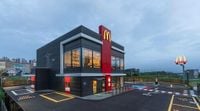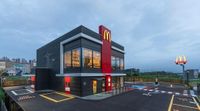In recent months, a wave of culinary and travel trends has swept across East Asia and the United States, with Korean instant noodles—known as K-ramen or "ramyun"—at the center of a growing cultural phenomenon. From bustling specialty shops in Texas and California to the frugal travel hacks of Chinese Gen Z, instant noodles are stirring up more than just boiling water: they're reshaping food experiences, tourism, and even international business strategies.
At the heart of this ramen renaissance is the Ramyun Library in Dallas, Texas. Despite its scholarly name, this establishment is no quiet reading room. Instead, its walls are stacked floor-to-ceiling with brightly colored packets of Korean instant noodles. According to a report by Herald Economy published on October 26, 2025, the Ramyun Library opened its doors in December 2023 and has quickly become a sensation among locals and tourists alike. Unlike the Japanese-style "ramen" shops, the Ramyun Library proudly displays the Korean spelling "ramyun," signaling a distinct cultural identity. Here, customers can choose from a dizzying variety of Korean instant noodles—spicy Shin Ramyun, fiery Buldak Bokkeum Myun, savory Neoguri, and more—then cook their selections on-site, customizing each bowl with toppings like eggs, scallions, mushrooms, cheese, dumplings, and sausage.
The appeal of these shops isn't just the food; it's the experience. As Yoon Mi-jung, head of the Korea Agro-Fisheries & Food Trade Corporation (aT) for the Americas, explained to Herald Economy, "Korean-style instant ramen specialty stores are gaining popularity in the United States, and their numbers are gradually increasing. The walls of the stores are filled with colorful ramen packages, creating a pop-art-like atmosphere, and K-pop music plays from the speakers." She added, "The fun of making your own ramen, the freedom to combine Korean-style toppings for a unique taste, and the chance to experience Korean convenience store culture are fresh and intriguing to foreigners."
It's not just Dallas that's catching the fever. Similar establishments like Slurp & Sip in Louisiana and California, and The Ramyun Zip in Virginia, have popped up, each offering their own take on the K-ramen experience. According to the U.S. dining publication Eater, Slurp & Sip features special cooking machines that perfectly prepare broth, noodles, and toppings to the customer's preference. Their staff recommends spicy Shin Ramyun Black with added egg and scallions—a combination that's quickly become a crowd favorite. Prices at Slurp & Sip range from $6 to $7 (about 8,600 to 10,000 KRW), with free toppings and premium add-ons like eggs, rice, and corn available for a small fee.
The trend isn't limited to the U.S. In Seoul, the convenience store chain CU has turned the humble instant noodle into a must-try tourist attraction. Its "CU Ramyun Library," launched in the trendy Hongdae district in 2023, now boasts 55 branches nationwide. According to BGF Retail, sales of noodle products at these locations surged by 153.8% in the first nine months of 2025 compared to the previous year. The stores cater especially to international visitors, who see cooking and eating instant noodles in Korea—especially the iconic "Han River ramen" experience, made famous by K-dramas—as an essential part of their travel bucket list.
Social media influencers are fueling the craze. One popular Instagrammer, kellysimplyeats, posted a video of her visit to the Ramyun Library, sparking a flurry of comments from international fans. Reactions ranged from, "It looks like it's about to spread worldwide like McDonald's," to, "I can't believe I can taste Han River ramen here!" and even, "Why don't we have this in Germany?" The excitement is palpable, with many expressing frustration that such stores haven't yet reached their cities.
But while Korean instant noodles are finding new fans abroad, they're also at the center of a very different trend in China. Reports from Asia Economy and the Daily Mail on October 25 and 26, 2025, highlight the rise of "special forces travel" among Chinese Gen Z. Inspired by military efficiency, these young travelers aim to see and do as much as possible on a shoestring budget. Their tactics? Walking between attractions, eating convenience store food (often instant noodles), and even sleeping overnight in 24-hour McDonald's locations to avoid costly hotel fees.
One Chinese tourist, Chloe Kai, recounted to Asia Economy how she spent just 100,000 KRW (about $75) during a three-day trip to Hong Kong by alternating between sleeping in McDonald's and a cheap hotel, eating only convenience store meals, and visiting free attractions like Victoria Harbour. Others reported consuming vast quantities of instant noodles and snacks over 24- or 48-hour periods, sometimes spending up to 340,000 KRW on noodles alone. Social media has become a hub for sharing these travel hacks, with photos and tips circulating widely.
This frugal travel boom has caught the attention of both local residents and policymakers. Some Hong Kong residents have voiced concerns about the influx of budget travelers, arguing that the practice of sleeping in fast-food restaurants undermines the city's image and does little to boost the local economy. Statistics back this up: while the number of tourists from mainland China to Hong Kong increased by 11% in the first eight months of 2025 to 25.5 million, total retail sales actually dropped by 1.9% compared to the previous year, according to the Hong Kong Tourism Board and Census and Statistics Department.
Experts are divided on the long-term impact. Mimi Lee, a professor of tourism at Hong Kong Polytechnic University, told Asia Economy, "The number of tourists has increased, but problems of over-tourism and congestion have arisen. Many budget travelers no longer stay overnight in Hong Kong, don't dine at local restaurants, and do little shopping, contributing only minimal income to the economy." Still, she noted, "If these young visitors' purchasing power increases in the future, there could be long-term benefits." Meanwhile, Mingming Cheng, director of the Social Media Research Lab at Curtin University, suggested that the "special forces travel" trend reflects broader social pressures facing young Chinese. "They experience 'time anxiety'—wanting to pack as many experiences as possible into limited time and budget," she observed.
The Korean government is watching these trends closely. With the U.S. instant noodle market expanding and Korean-style shops thriving at home and abroad, the Ministry of Agriculture, Food and Rural Affairs (aT) is actively supporting the overseas promotion of Korean instant noodles. At the same time, the South Korean government is considering regulatory measures in response to the massive consumption of "special large portion instant noodles" by Chinese administrative groups, who have been sharing their noodle-eating exploits on social media.
Ultimately, whether it's the joy of customizing a bowl of spicy noodles in Dallas, the thrill of a budget adventure in Hong Kong, or the rush of sharing a viral food trend online, instant noodles have become much more than a quick meal. They've become a symbol of cultural exchange, economic opportunity, and the ever-evolving tastes of a new generation. And for those still waiting in line at the Ramyun Library or dreaming of their next "special forces" trip, one thing is certain: the humble noodle is having its moment in the global spotlight.




